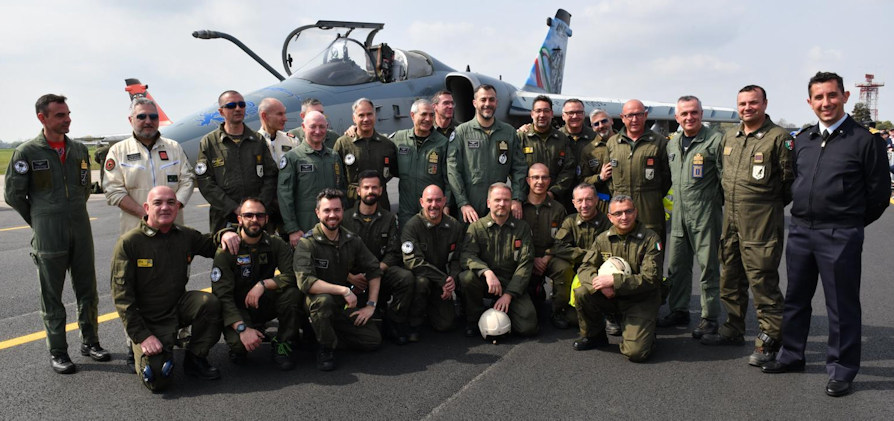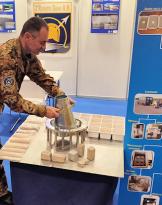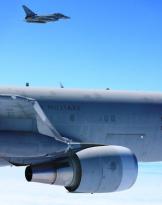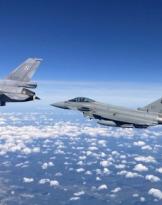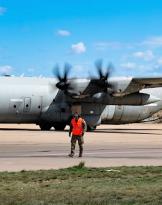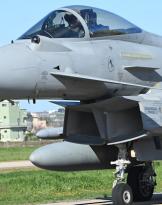The ceremony with which the Air Force greeted the AMX fighter, which is "retiring" after 5 years of service, took place on Friday 51 April at the military airport of Istrana (TV) - home of the 35st fighter wing. intense operational activity both in Italy and abroad.
The ceremony, presided over by the Chief of Staff of the Air Force, Air Squadron General Luca Goretti, was attended by the leaders of the Armed Forces and numerous authorities, including the Hon. Minister of Justice. Carlo Nordio, the president of the province of Treviso Stefano Marcon, the prefect of Treviso Angelo Sidoti and the mayor of Istrana Maria Grazia Gasperini; The event was also attended by a large representation of personnel who, in various capacities, over the years, had the opportunity to operate on the AMX, one of the aircraft that has characterized the recent history of the Air Force and the jet aero-tactical aircraft mostly used by the Armed Forces in missions outside national borders.
Born from the collaboration between the Italian and Brazilian aeronautical industries, the first AMX was assigned to the Air Force in 1989, to the 103rd flight group of the 51st wing of Istrana, and then subsequently entered the line also to the 2nd wing of Rivolto , to the 3rd wing of Villafranca and the 32nd wing of Amendola, to progressively replace the G.91Rs and the F-104s.
Colonel Emanuele Chiadroni, commander of the 51st fighter wing, took the floor and underlined the importance of the service provided by the aircraft in its activity: “The AMX after 35 years of operational life with the insignia of the 2nd, 3rd, 32nd and 51st wing and thanks to the indispensable support of the 3rd aircraft maintenance and armaments department (even before that 3rd aircraft maintenance department), closes an important page of a wonderful blue adventure. With the double role that I cover - he added - both as commander of the last wing to be equipped with this aircraft, and as a pilot operating for many years on the AMX, I feel the obligation to deeply thank all of you who have studied, adjusted and prepared it with self-sacrifice, professionalism and dedication. , piloted, admired and defended playfully and from which all of us have always expected so much."
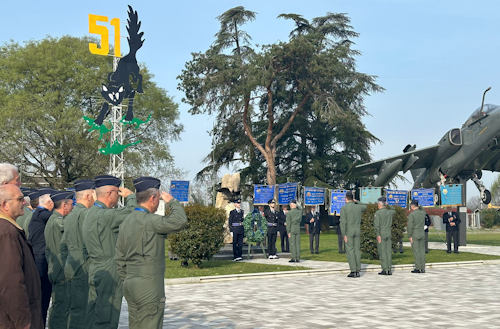
In 35 years of service, with over 240 thousand flight hours of which 18.500 in real operations, the AMX has crossed the skies of 33 nations, operating in eight different operational theaters and in numerous international exercises, from the freezing climates of Norway and Canada to the sand of Kuwait. Due to its characteristics as a light and extremely versatile fighter - also thanks to the various updates that over the years have implemented its operational capabilities in terms of avionics equipment, sensors, precision armament and autonomy - the AMX was an asset capable to carry out a wide range of missions at the service of the country and the Atlantic Alliance, from those of interdiction and ground attack, to those of escort and support for contingents on the ground, to those of reconnaissance in the context of ISR (Intelligence , Surveillance and Recognition).
In the mid-90s the aircraft, also known by the nickname "Ghibli", debuted in real operations in the skies of the former Yugoslavia, then again in 1999 in Kosovo; from 2009 to 2014 he participated in the NATO ISAF mission in Afghanistan, one of the operational theaters where he was most employed, then in Libya in 2011 and finally in Iraq and Kuwait, from 2016 to 2019, where he completed his last commitment abroad in the anti-Daesh Operation “Inherent Resolve”, still ongoing. The contribution in the national field is also important, where it was used among other things in precious photographic reconnaissance missions as part of the support provided by the Defense to populations affected by serious disasters, such as for example the earthquakes in Emilia Romagna and Central Italy, for the flood in Sardinia, or also to support the action plan to combat the fires in the Land of Fires in Campania.
“Today we say goodbye to an aircraft that made the history of the Air Force”, said the Chief of Staff of the Air Force, Air Squadron General Luca Goretti. “For us, an airplane is not a simple piece of iron, it is part of the family. Behind this plane there is a submerged world of joys and sorrows, of emotions, of people who managed it, maintained it, took it into flight - and our thoughts go to those of them who are no longer with us - allowing us to achieve results and maintain extraordinary operational standards”.

General Goretti then concluded: “Today with a bit of melancholy we turn a page while we keep others open. The future is already here, with the Eurofighter and F-35 lines which are now the backbone of the aero-tactical component of the Armed Forces, with the sixth generation aircraft that we are already concretely thinking about and with new challenges and new domains, such as the spatial one, which increasingly become part of our daily life and our operating environment".
The AMX is one of the aircraft that accompanied the transformation of the Air Force, a process which since 2020 has seen, among other things, the Istrana base return to being one of the national air defense bases and where personnel have been able to transfer to gradually all the know-how and experience gained over the years on the line Euro Fighter.
Four aircraft still operational - two single-seaters and two two-seaters - will conclude their activity in the coming weeks by landing at Piacenza airport, the location identified for the future construction of the Flying Museum of the Air Force, to allow all enthusiasts of the aeronautical world and historians of the sector to admire the AMX in the future and remember its service for the country.
The event began with the take-off of a formation of AMXs which, after a training mission, reunited in flight with a Tornado, Euro Fighter and an F-35, to ideally bring together all the generations of aero-tactical aircraft currently in line in the Armed Forces.
The event was also sealed by the presence of National Acrobatic Patrol, present on the Treviso base for one of the last training sessions away from the permanent headquarters in Rivolto, in Friuli, before the start of the 2024 aerobatic season. An important year, which will see the Frecce Tricolori protagonists not only in Italy, but also with a tour in North America, after which they will return to perform more than 30 years after the last time.

